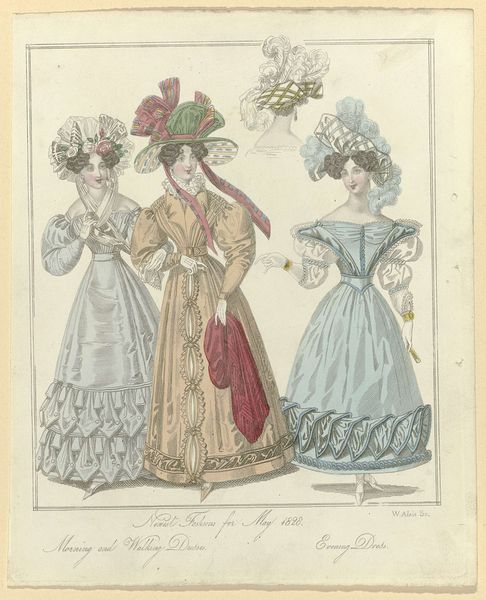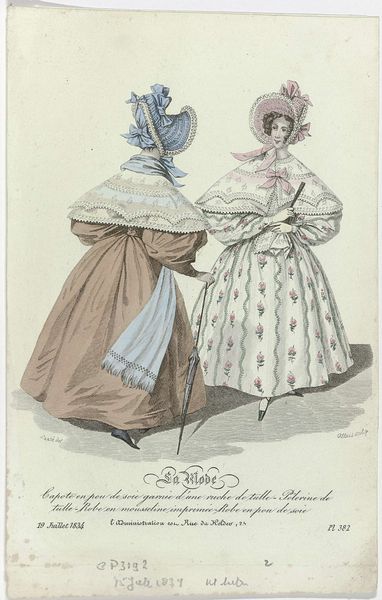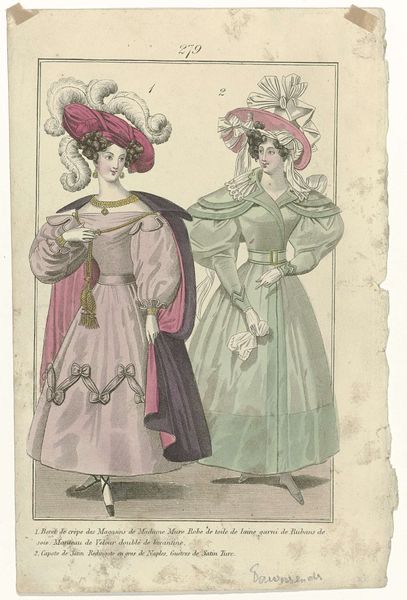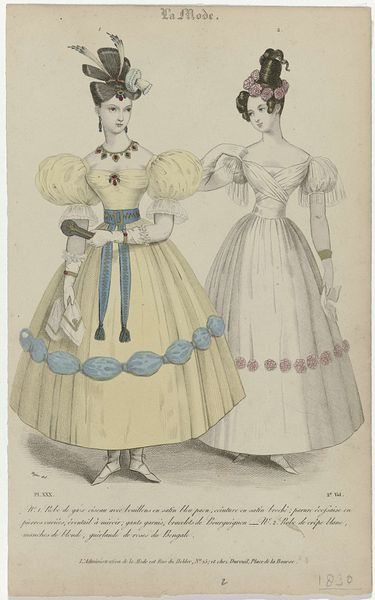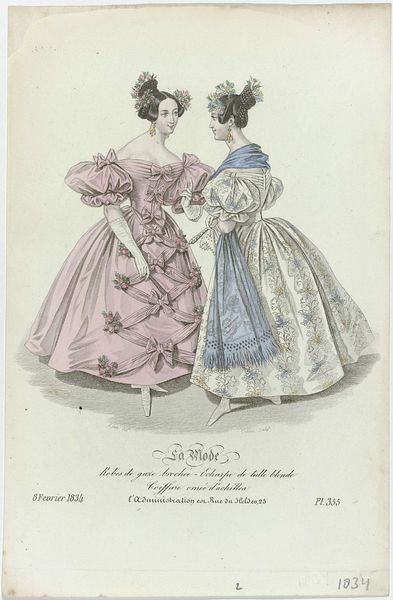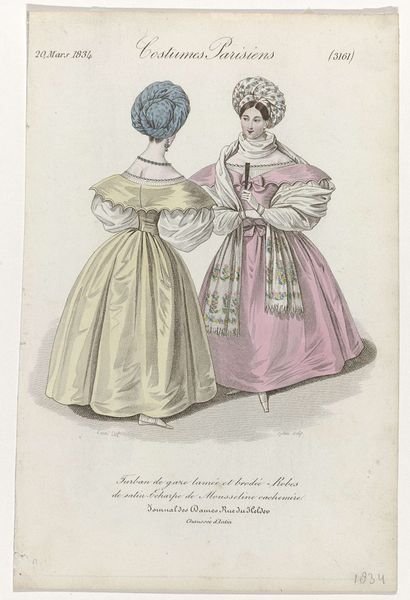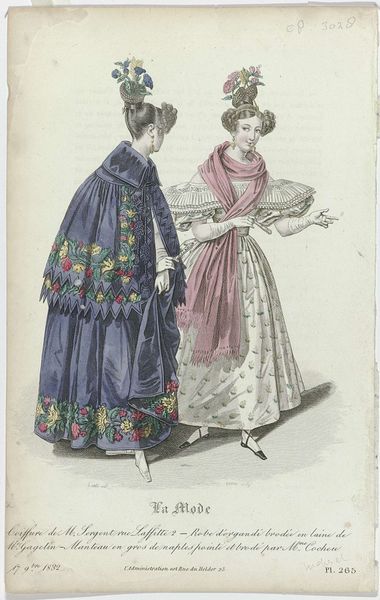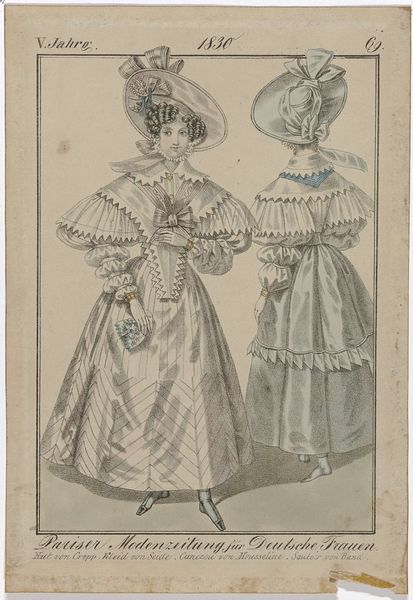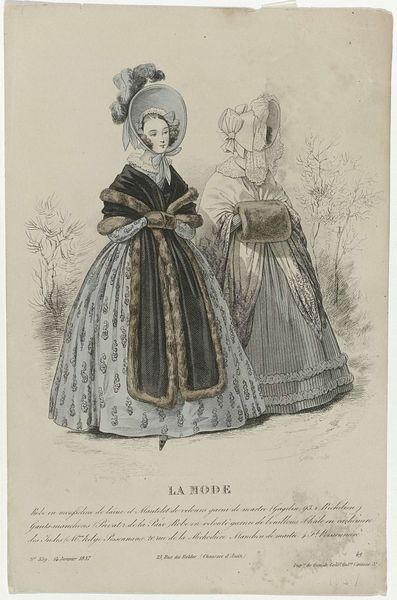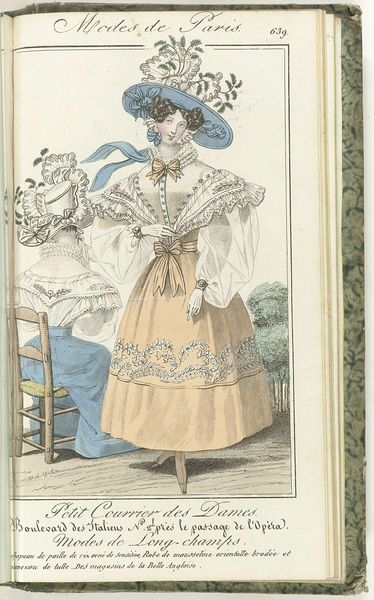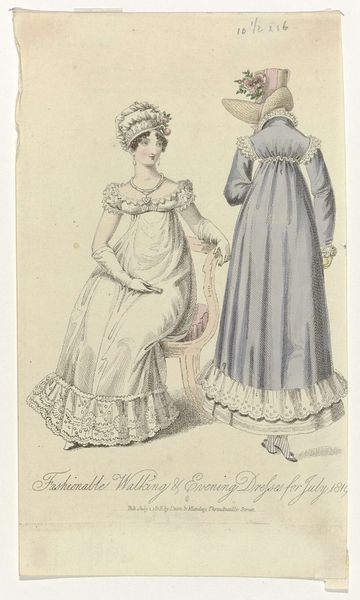
drawing, print, ink, pen
#
portrait
#
drawing
# print
#
figuration
#
historical fashion
#
ink
#
coloured pencil
#
romanticism
#
traditional art medium
#
pen
#
watercolour illustration
#
genre-painting
#
decorative-art
#
dress
Dimensions: height 219 mm, width 134 mm
Copyright: Rijks Museum: Open Domain
August Delvaux made this fashion plate in 1832 using etching and engraving, with hand coloring. Note the description of the materials used in the dresses: ‘straw’ and ‘silk moire’. These imply extensive global supply chains, and significant human labor. Consider that the paper itself comes from somewhere, too: most likely rags, pulped and pressed into sheets by hand. The image then had to be drawn with an etcher’s needle, bitten by acid, and printed. The final touch was watercolor, applied laboriously by women working in the publishing shop. The fashion plate, then, is not just an image *of* production, but an object *of* production. And a rather complex one, at that. Fashionable ladies depended on the exploitation of others, all condensed into an image that now seems quaint, even innocent. But by looking closely at the making, the labor that produced ‘La Mode’ itself, we can better understand the era’s underlying realities.
Comments
No comments
Be the first to comment and join the conversation on the ultimate creative platform.

